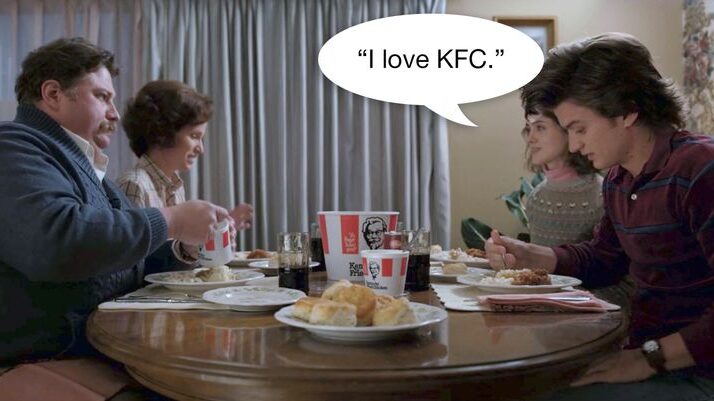After a year from a production’s wrap date, a film or series should be close to airing. The crew on the project are excited to see their art on screen, while brands involved in the film anticipate how much exposure they will have. Will the placement meet the deliverables for an integration fee deal? Did the editors use the cut with the hands-on moment or the product near the actor? Brands have different goals when it comes to product placement and partnering with Hollywood, but they all want that premium placement compared to a prominent or standard placement. As productions continue to feature brands in their stories, it’s important to know the distinction between these placement classifications to understand how brands analyze their products within content.
Standard Placement
Standard placements are when a product is within the frame of the screen yet may be less distinguishable. For example, a back bar has many bottles and may not be the focus of the scene, yet the brand can be seen somewhere. Standard placements are valuable because it means the product is established on set and on screen. When the series comes back for another season or if the film has a sequel, the production is more inclined to rebuild the set to be how it appeared on-screen. Despite the product appearing in the final cut, these placements are not the culture-creating moments that some placements have established in and out of content.

Prominent Placements
These placements are the next step up in a brand being featured as these placements have the product at the forefront of a scene. The brand is distinguishable and implies usage with a character. For example, a specific alcohol brand sits next to a glass with a drink. The character drinks from the glass but the audience knows the brand being consumed. Prominent placements are favorable for brands because they have more significant exposure, yet these placements do not include hands-on moments or verbal mentions.

Premium Placements
Premium placements are the cream of the crop. These placements consist of hands-on moments and/or verbal mentions. To continue with the same alcohol bottle example, the character pours the liquor into the glass, which is then consumed. These placements are premium because there is no mistake that it is directly tied to the character in the scene. For some brands, a verbal mention is more important than seeing the product, and vice versa. However, a verbal and visual moment is the highest form of exposure because it should solidify exactly what the product is within the content.

On-screen exposure has different degrees of prominence because brands usually only report placements that are distinguishable of their product. Standard placements are valuable because the product is established on set and some brands want to see their product cast a wide net over Hollywood. Prominent placements include an extended period of exposure that acts as an advertisement within content. Finally, premium placements act as a direct link for brand and character as there is usage or verbal mention in the dialogue of the scene. Brand objectives are different and may call for more placements of one classification or another, but each placement holds value because they all help further the narrative that brands are enriching the world of the story.



